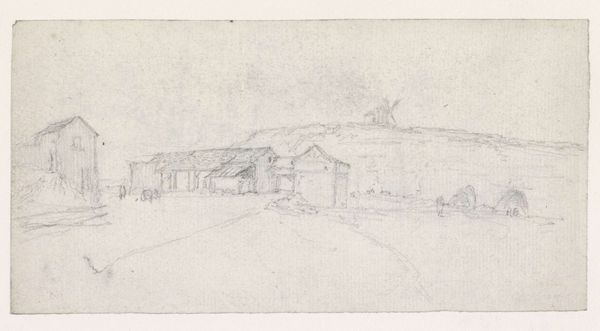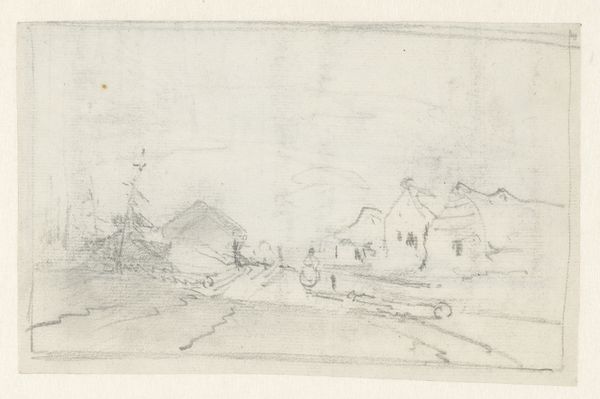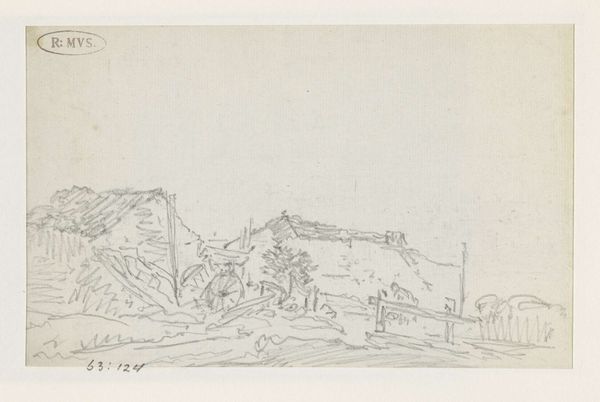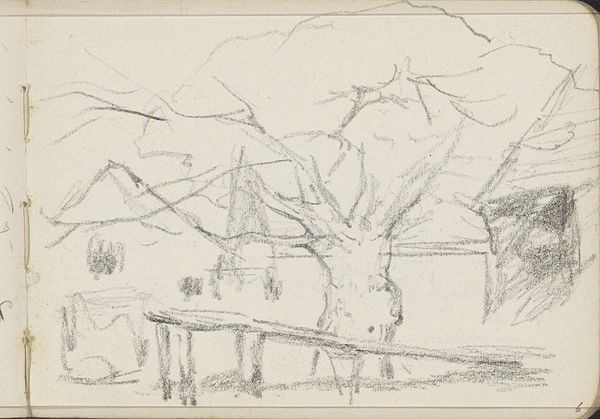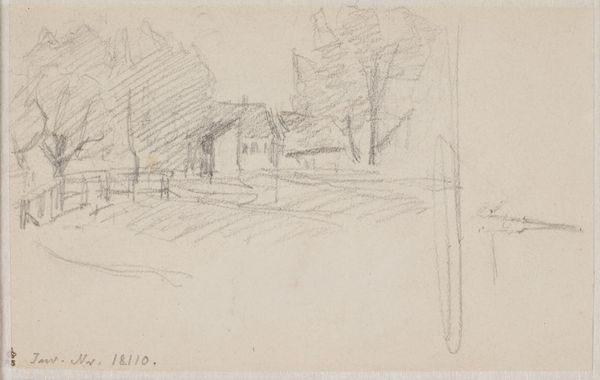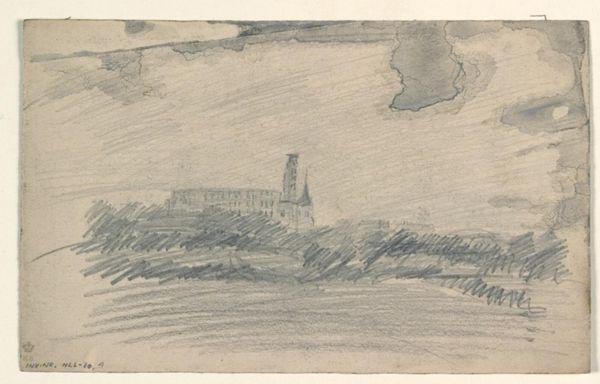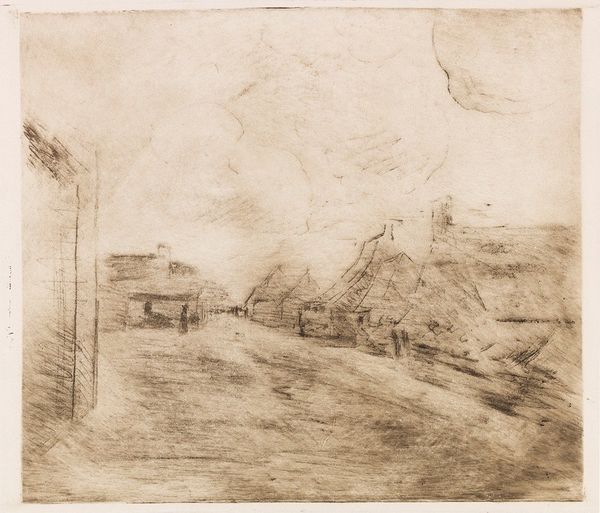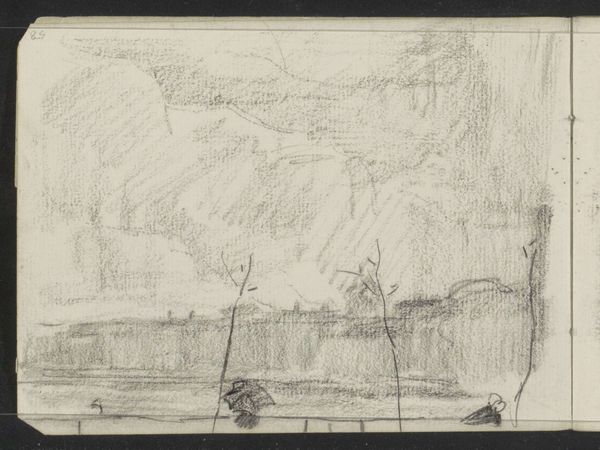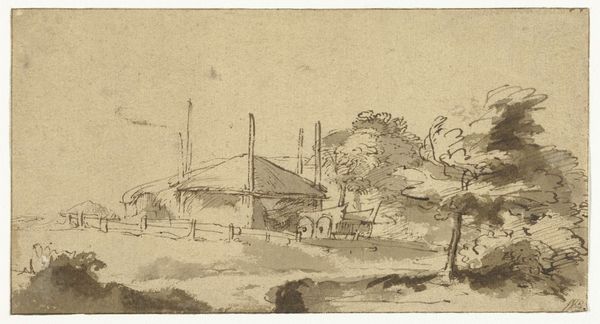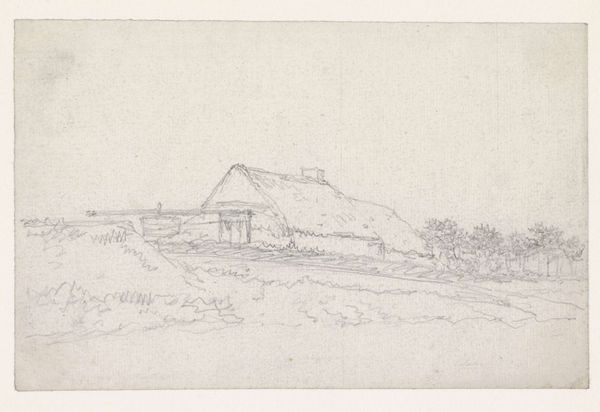
#
amateur sketch
#
light pencil work
#
pencil sketch
#
incomplete sketchy
#
personal sketchbook
#
sketchwork
#
rough sketch
#
sketchbook drawing
#
sketchbook art
#
initial sketch
Dimensions: height 98 mm, width 157 mm
Copyright: Rijks Museum: Open Domain
Curator: Welcome. Here we have "Schetsblad met landschap met boerderij," or "Sketch Sheet with Landscape with Farm," a pencil drawing by Jan Toorop, likely created sometime between 1868 and 1928. It’s part of the Rijksmuseum collection. Editor: It feels fleeting. Just the barest suggestion of a scene – a cluster of buildings huddled under a vast sky. There’s a quiet melancholy to its simplicity. Curator: Indeed. Note how Toorop utilizes delicate, almost hesitant lines to construct the landscape. The composition hinges on a stark contrast between the softly rendered structures and the implied vastness of the sky, suggested with minimal marks. Consider the semiotic implications of erasure. What do the missing, unfinished components represent in the overall composition? Editor: I see it as a depiction of rural vulnerability. The tentative lines and unfinished quality hint at the fragility of agricultural life and the societal forces impacting rural communities during that era. The rough sketch represents their social invisibility. Toorop perhaps attempts to give them visibility and presence. Curator: An interesting interpretation. Formally, the repetition of simple shapes—rectangles for buildings, arcs for treetops—creates a sense of rhythmic balance, despite the sketch's incompleteness. It’s almost minimalist, foreshadowing later movements. The pencilwork itself calls to mind a quiet yet persistent energy. Editor: I find myself wondering about the lived experience of people in these spaces. Who inhabited these farmhouses, what were their struggles, what relationship did they have with nature? What class did the subject come from? What are his political inclinations? This seemingly simple landscape opens avenues for questions on social inequities. Curator: Undoubtedly, understanding the socio-historical context adds layers to our appreciation. But the artwork also possesses intrinsic value. Stripped of overt symbolism, it embodies the pure act of seeing and recording—a fundamental exploration of form. Editor: Perhaps Toorop hoped that through raw art, the viewers’ humanity would come forth, connecting with that of their invisible and silenced working-class compatriots? Curator: Well, by contemplating the stark beauty inherent in this unassuming drawing, we’ve touched on both its artistic essence and broader historical implications. Editor: And hopefully, inspired some critical self-reflection too.
Comments
No comments
Be the first to comment and join the conversation on the ultimate creative platform.
